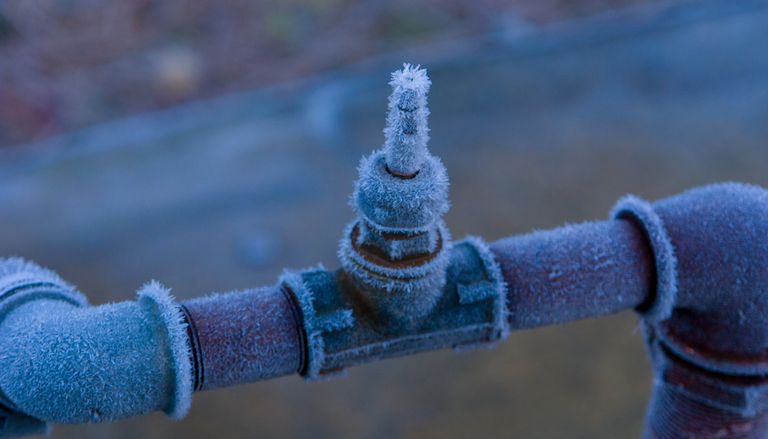Protecting Against Frozen Plumbing in Cold Weather: Essential Strategies
Protecting Against Frozen Plumbing in Cold Weather: Essential Strategies
Blog Article
Have you been looking for insight about How to Prevent Your Pipes From Freezing?

Cold weather can damage your pipes, particularly by freezing pipes. Here's exactly how to avoid it from occurring and what to do if it does.
Intro
As temperature levels decrease, the danger of frozen pipes increases, potentially causing pricey repair services and water damage. Understanding how to avoid frozen pipes is essential for homeowners in cool environments.
Avoidance Tips
Protecting susceptible pipelines
Wrap pipes in insulation sleeves or use warmth tape to safeguard them from freezing temperature levels. Focus on pipelines in unheated or exterior areas of the home.
Home heating methods
Maintain indoor spaces adequately heated up, specifically areas with pipes. Open cupboard doors to permit cozy air to circulate around pipes under sinks.
Exactly how to recognize icy pipes
Seek decreased water flow from faucets, unusual smells or sounds from pipelines, and visible frost on subjected pipelines.
Long-Term Solutions
Architectural modifications
Consider rerouting pipes far from exterior walls or unheated areas. Include extra insulation to attics, cellars, and crawl spaces.
Updating insulation
Buy high-quality insulation for pipelines, attics, and walls. Correct insulation aids keep constant temperatures and decreases the threat of icy pipes.
Safeguarding Exterior Plumbing
Yard pipes and outside taps
Detach and drain pipes garden pipes before wintertime. Install frost-proof faucets or cover exterior faucets with shielded caps.
Comprehending Icy Pipelines
What triggers pipes to freeze?
Pipelines ice up when exposed to temperature levels listed below 32 ° F (0 ° C) for extended periods. As water inside the pipelines ices up, it expands, taxing the pipeline wall surfaces and possibly creating them to burst.
Dangers and damages
Frozen pipelines can cause water supply disturbances, building damages, and pricey repair work. Burst pipes can flooding homes and cause comprehensive structural damage.
Indicators of Frozen Pipeline
Identifying icy pipes early can avoid them from rupturing.
What to Do If Your Pipes Freeze
Immediate actions to take
If you presume frozen pipelines, keep taps available to eliminate pressure as the ice thaws. Use a hairdryer or towels soaked in warm water to thaw pipelines slowly.
Verdict
Stopping frozen pipelines requires aggressive measures and quick feedbacks. By understanding the causes, indicators, and safety nets, homeowners can secure their pipes throughout winter.
5 Ways to Prevent Frozen Pipes
Drain Outdoor Faucets and Disconnect Hoses
First, close the shut-off valve that controls the flow of water in the pipe to your outdoor faucet. Then, head outside to disconnect and drain your hose and open the outdoor faucet to allow the water to completely drain out of the line. Turn off the faucet when done. Finally, head back to the shut-off valve and drain the remaining water inside the pipe into a bucket or container. Additionally, if you have a home irrigation system, you should consider hiring an expert to clear the system of water each year.
Insulate Pipes
One of the best and most cost-effective methods for preventing frozen water pipes is to wrap your pipes with insulation. This is especially important for areas in your home that aren’t exposed to heat, such as an attic. We suggest using foam sleeves, which can typically be found at your local hardware store.
Keep Heat Running at 65
Your pipes are located inside your walls, and the temperature there is much colder than the rest of the house. To prevent your pipes from freezing, The Insurance Information Institute suggests that you keep your home heated to at least 65 degrees, even when traveling. You may want to invest in smart devices that can keep an eye on the temperature in your home while you’re away.
Leave Water Dripping
Moving water — even a small trickle — can prevent ice from forming inside your pipes. When freezing temps are imminent, start a drip of water from all faucets that serve exposed pipes. Leaving a few faucets running will also help relieve pressure inside the pipes and help prevent a rupture if the water inside freezes.
Open Cupboard Doors
Warm your kitchen and bathroom pipes by opening cupboards and vanities. You should also leave your interior doors ajar to help warm air circulate evenly throughout your home.

As an avid reader on How to prepare your home plumbing for winter weather, I think sharing that excerpt was sensible. Sharing is good. One never knows, you may just be helping someone out. Thank you for your time spent reading it.
Book An Appointment Report this page